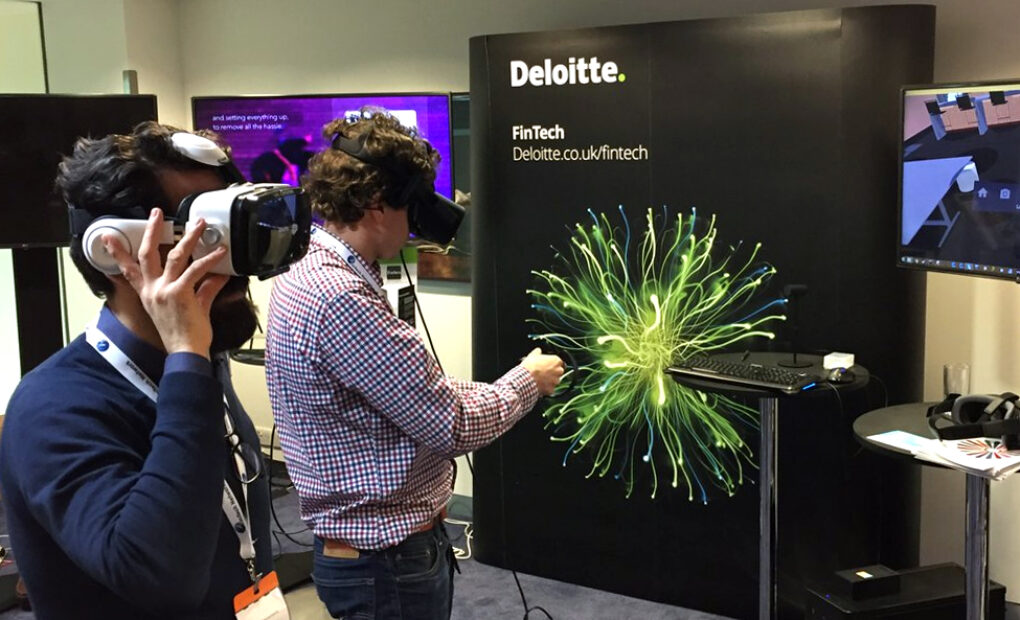
5 Reasons To Use VR in Training
Workforce training is one area where virtual reality is being used to great effect. VR has the unique ability to transport you to an entirely fabricated, yet completely real environment, and this makes it perfect for educating individuals & teams on the different scenarios they may face whilst doing their jobs.
Below, we run through some of the key advantages of utilising VR in training:
It’s real
In VR you can create the exact scenarios trainees will be expected to handle on the job. You’ll build the scenario entirely from scratch and control every single variable the trainee may encounter. You could create a scenario which requires the trainee to take an action, and then create a range of outcomes which vary depending on the action taken.
It’s hands on
Learning by doing is proven to work better than learning by observing, and this is exactly what VR can offer. Advance headsets with controllers allow the user to take part in a scenario, rather than just observe, and it’s this hands-on experience which is so valuable to trainees. Importantly, this technology makes the learning experience fun & enjoyable, more than can be said for tedious conferences.
It’s cost effective
You can vastly reduce the cost of educating a large workforce by training staff remotely with VR headsets. Rather than fly all your staff to a single location for a 3-day training event at huge expense, employees can do the training at a time & location that suits them. This also ensures that the training experience is consistent across the organisation.
It’s safe
Some scenarios are impossible to realistically recreate in training due to the risk or cost involved. This is not the case in VR. In virtual reality, the trainee can learn how to complete dangerous tasks within a totally safe environment where all the variables, unlike in real life, are completely controlled.
It’s measurable
With data and analytics at the forefront of every business nowadays, companies want to be able to quantify how their staff perform in training. VR is perfect for this, both for setting benchmarks on how well staff should perform, and for showing how an individual’s performance improves (or not) over time. This allows the trainee to receive immediate feedback on how they performed and the instructor to suggest ways they could improve.
Case Studies
Deloitte
Deloitte wanted to make the process of learning about corporate responsibility more fun and memorable. To do this, we created a series of films from the point of view of an employee who encounters a variety of difficult situations. At certain parts of the experience the user has to make a decision – for example, should they report their colleagues who are sharing private client information, confront them or leave them alone.
The choices they make lead to different outcomes in the video and allow the trainee to learn from their actions immediately, as if they were actually there. The result for Deloitte was a far higher level of engagement in their training exercises and a greater retention of information.
Ford
Carmaker Ford are using VR to train their employees around the world on the design and functionality of new models before the car has even gone into production. Employees can walk around a virtual version of a new car and also sit in the interior in order to learn about any new features and design aspects.
Leadership & Crisis Management
Crisis management workshops usually involve a group of people in a windowless room pretending somethings gone wrong. In VR, you don’t need to pretend, the shit can actually hit the fan. The scenario can be tailored to that specific business and managers can monitor a leader’s decision making and stress levels in a simulated crisis. This allows managers to show the company’s board that they’re using the latest technology to plan for a range of worst case scenarios.

If you have any questions about how you could use VR in your company, we’d love to hear from you.

Comments
Responses
Callum Palmer says
There really are a ton of benefits to using VR in training and the article does a great job of covering them. I particularly like that the article brings up the fact that it is hands on. After all, if the employee can look at the product they're selling or working on and move it around in front of them without breaking them then that can be a huge advantage.
BestJonna says
I see you don't monetize visualise.com, don't waste
your traffic, you can earn extra cash every month with new monetization method.
This is the best adsense alternative for any type of website (they approve all websites), for more details simply search in gooogle: murgrabia's tools